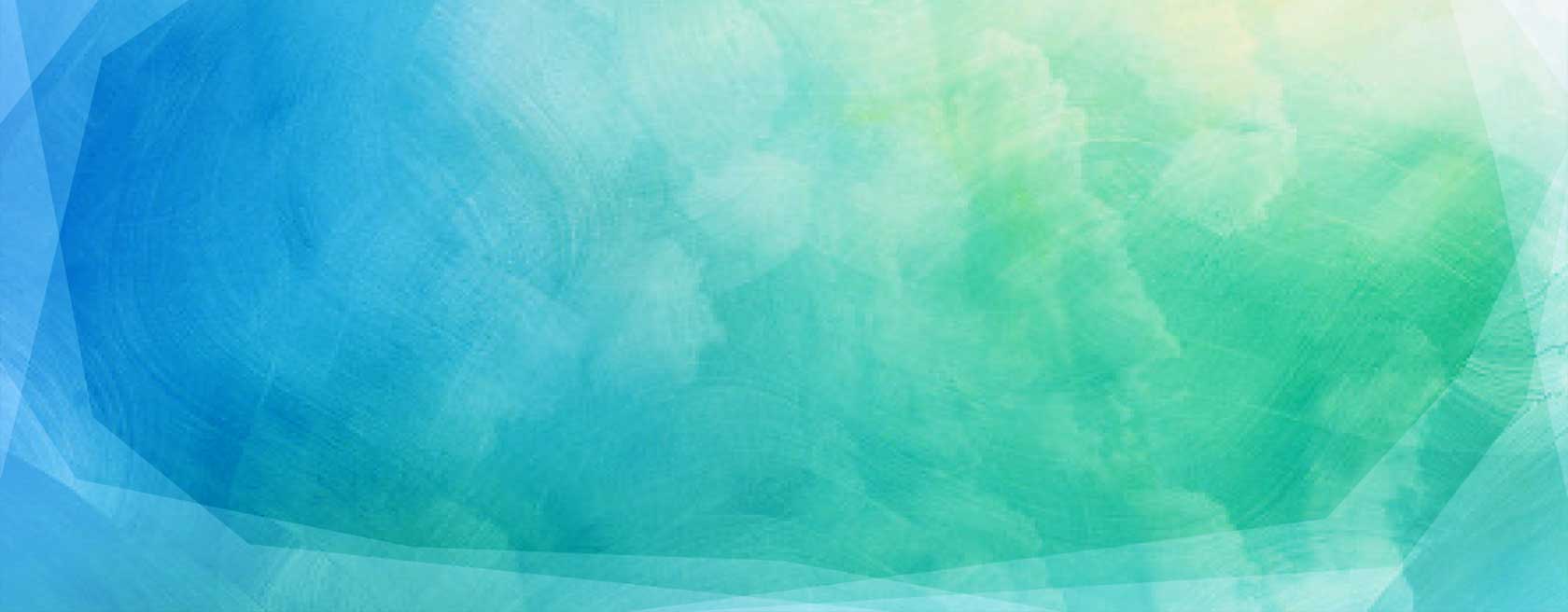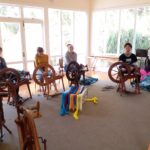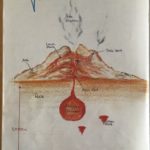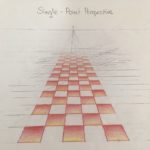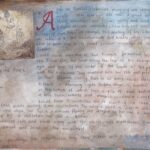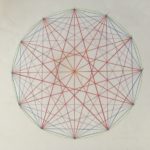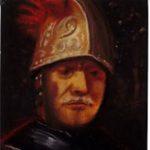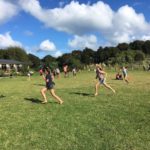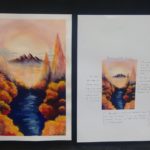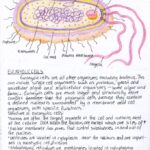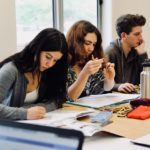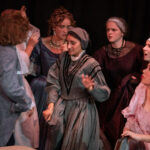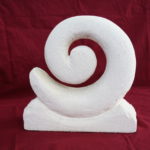In the Upper School the third seven years of life begins. We work on guiding the students through from 14 to 18 and help prepare them to take over as independent guides to their own destinies.
Our goal is that students enjoy learning, to learn how to learn and always question why.
The aim is to provide young people with opportunities to develop their creativity, initiative, flexibility, interest in the world and the ability to communicate their ideas. We nurture empathy, social competence and self-motivation as well as practical problem-solving capabilities and formal academic skills.
All students study all subjects – practical, artistic and academic – sciences, crafts and technologies, humanities and arts. This gives students a broad experience from which to choose their future specialised tertiary study or work.
Each day is carefully balanced between academic, practical and artistic subjects to generate wellbeing and allow students to integrate their learning. Main Lessons are taught in the morning for 2 hours for a period of 3-4 weeks. This continuous concentrated study of one subject allows for more in-depth learning than the equivalent hours spread over period timetabling.
The curriculum is designed to be in harmony with the inner development of the students as they move through adolescence and into early adulthood.
The ideal of Waldorf education is that the students leave it as free-thinking individuals who are able to make their own moral judgements, and participate in practical activities.
Truthfulness is the most important value in the Waldorf Upper School. Students can’t be forced to hold opinions which conflict with their own experience, as this would affect the fundamental purpose of developing free thinking.
Waldorf students impress with their clarity of thinking, the objectivity and originality of their judgements, and their vast array of general knowledge. Waldorf students are better equipped with the resilience to overcome the stresses of our modern age. They have the ability to think outside the box, and adapt to our quickly changing world where the jobs of the future cannot be predicted.
To view our latest Education Review Office (ERO) Report please click here
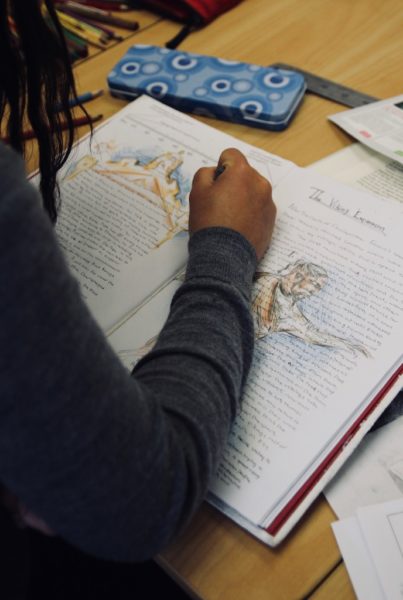
- Class 9
- Class 10
- Class 11
- Class 12
- New Zealand Certificate of Steiner Education
- International exchange
In Class 9, students turn 15. The curriculum mirrors the inner struggle of opposition that students feel. In physics they study the opposition of heat and cold; in chemistry, the expansion and contraction of gases; in history, the French Revolution, and in literature, comedy and tragedy.
Students of this age stand at the edge of a new world, wondering how to navigate the seas of excitement and danger and responsibility for themselves and for the world.
A capacity for stringent logic awakens within the Class 9 student. This new power of thinking allows and requires distance from self and others. The students develop a clearer structure to their thinking and are able to make causal deductions. There is a move from judgement based on feeling to judgement based on observation and understanding. The students demonstrate a growing ability to discover the underlying principles behind phenomena by using analytical processes.
The teacher must deliver every lesson without bias. Even a person like Joseph Stalin is presented as the man who modernised Russia, as well as a ruthless dictator. The students must be left to form their own moral judgements. It is the development of ideals and beauty in the lower school that comes into play when studying such characters, and these developed feelings affect the student’s discernment. Thus feelings weave with thinking, and the students develop their own ethics in freedom. In Class 9 the curriculum focuses on many polarities reflecting the adolescents’ need to swing from one extreme to another, in doing so, they develop discernment according to their own truth. It is important that they have the opportunity to do this, as enforcing morals simply acts as something to rebel against.
What is part of Class 9 curriculum?
In Class 9 all subjects are compulsory. All students study geography, mathematics, sciences, English, history, aesthetics, art, craft, physical education, choir, technology and native nursery.
English
English lessons focus on the technical skills of oral and written argument, debating and discussion styles. Essay writing skills are extended and various writing styles and texts types are explored. Literature content offers examples of catharsis, humour and of tragic and comic heroes who struggle with the dark and light aspects of themselves.
The English curriculum in general is oriented towards integrating the thinking- feeling- willing capacities of the students and to offering them literary examples that inspire their high idealism.
The continued focus on fostering the imaginative faculties of students of this age helps them to see the point of view of the other.
Mathematics
The main lessons are Laws of Chance, which contrasts the randomness of individual events with the law governed nature of multiple events, Conic Sections, which looks at contrasting ways in which these family of curves can be represented, and Projective Geometry, which examines points, lines and planes and their inter-relationships.
Students at this age see the world in terms of black and white. It is essential for the healthy development that this soul gesture is nurtured and worked with so that the students can pass through this phase and mature. Mathematics supports the overall curriculum theme in a number of ways. At a general level mathematical problems only have two solutions, the answer is either right or wrong, and so is a very apt subject for Class 9 students.
Mathematics is unique in developing logical thought: there can be no debate or opinion, the solution is either correct or incorrect. As students advance in their mathematical education this rather stark contrast is developed in an aesthetic way with the concept of elegance – an elegant (normally simpler) solution is preferred. There is a pure and crystaline quality involved in the thought processes that are need to solve even quite simple mathematical problems. The essential elements of the problem need to be identified, these elements need to be organised with respect to each other in a logical way, and lastly appropriate mathematical techniques need to be used to find the solution.
At a more abstract level, mathematics gives students a taste for the universal and eternal: universal in the sense that specific cases can be generalized and eternal in the sense that Euclid’s geometry theorems (for example) apply anywhere at any time you are dealing with flat space.
Science
Topics include plant chemistry, biology, physics, and computer physics.
Science main lessons support Class 9 development through, for example, a study of the human body, particularly the contrast between the inner, hard skeletal system and the organs surrounding it (biology). Class 9 students like to know how things work in a very practical way and the Technology main lesson has been developed to meet this need using computers.
Science is presented through the accurate observation of phenomena from which a theoretical perspective can be developed, or at least judged against. Science teaching is therefore a practically based subject, and experimental work is incorporated as much as possible. Experimental design is a major feature of such practical work if results (as opposed to straight observation) are to be collected. Accurate observations using all the senses, careful setting up of apparatus, perseverance in the face of failure, accurate recording of measurements, and systematic setting out are all skills that are encouraged. A theoretical perspective is then developed on the basis of practical investigations.
Students are encouraged to participate in class discussions and are routinely asked to explain, using their own words, ideas or the interpretation of results. Biographies of famous scientists are used to introduce concepts such as gravity (Galileo) or chemical periodicity (Mendelev), which require students to understand their thought processes and what led them to develop their ideas.
Geography
The geography main lesson is Geomorphology. The principal theme of the creation of land and coastal forms through the battle between uplift and erosion is essentially an exploration between a creative/destructive polarity.
Map work, an essential aspect of geographical education, introduces students to a visual representation of scale and an appreciation of spatial patterns. Section drawing also reinforces these skills. Science, social history, mathematics and graphics are incorporated into the subject, which calls on these and many other areas of the curriculum.
Physical geography expands the time scale of human perception because the world around us is in a continuous state of flux. By understanding that landscape is part of a continuous process, students are able to see the world around as a continuum coming from the past and continuing into the future. Such a perspective expands human consciousness.
History
The historical themes continue on from the aesthetics of art main lesson which sweeps over the history of mankind’s consciousness, and ends with the Renaissance, from where history picks up the task of showing human consciousness from this time to the present. It collates historical studies done in previous years, placing them in context with each other, and gives a background overview from which novels and plays in other lessons can be chosen from, whilst laying a foundation for the philosophy main lesson latter in class twelve.
By working with historical subjects the students have previously studied in more detail, and placing them in an overarching context, they are able to study the ideas, inner motives and larger trends that work behind them. Teaching the students to think with large bodies of knowledge enables them to heighten their cognitive thinking. Not all the content will have been studied before, therefore students will need to string together bodies of knowledge both well known, and not. This will help them to develop skills in how to think cognitively, utilising imagination with learned facts to hold the big pictures, and developing interest in expanding knowledge to create more completed pictures.
Particular attention is paid to the way people think and feel in different times, and how different cultures, beliefs and political institutions effect this. Biographical stories are mentioned through out the lessons, linking students prior experience of these to the big pictures being presented. Where gaps in the classes knowledge appear, additional biographies can be given to enliven the student’s experience. Class discussions are encouraged to extend contemplation of opposing ideas, and how and why these differ from present times and our culture.
Art and Craft
In Class 9 the students find their world of childhood falling away, creating a feeling of darkness. On the other hand the students find themselves experiencing an unknown life within them. The students need to develop this so as to lighten up their inner and outer darkness.
In art this experience is worked with through black and white drawing and painting. The students are encouraged to work in such a way that they bring light into a picture, they let it form shapes, and darken shadows.
We don’t focus on the finished product, but on the process. The students develop technical skills, but these are developed within the process, not separately.
Printmaking can be taught, which uses black and white as well as the reversal between plate and print. Traditional photography works with the same process but also involves light and dark in a pure form. Simple clothing patterns can be designed and made to fit parts of the body, with the product sewn in reverse. Basket weaving and macrame involve the complex intertwining of strands that reflect the complex new world of puberty and high school, which presents the student with a complexity of new experiences that need weaving together.
The capacity for forming judgments is blossoming at this time and should be directed toward world-interrelationships in every field. The world must become so all-engrossing to young people that they simply do not turn their attention away from it long enough to be constantly occupied with themselves. For, as everyone knows, as far as subjective feelings are concerned, pain only becomes greater the more we think about it.
R. Steiner, Education for Adolescents, 1922.
In Class 10, the students reach 16 years of age.
In dealing with their emerging sexuality and particularly for boys, their growing awareness of physical power, sixteen year olds are faced with a threshold experience which presents an opportunity for the healthy development of individuality.
The sixteen year-old yearns to understand the world and to find their sense of purpose within it. The earlier Class 9 search for balance and harmony now begins to bear fruit. The development of greater clarity of thought and an increasing ability to form balanced judgments helps students to extricate themselves from the unstable nature of their emotional lives. There is a greater capacity for reflection, which can lead on the one hand to self consciousness and the pain of growing existential awareness, on the other they become capable of great feats of compassion, endurance, intellectual and physical prowess. The students begin to discover their own inner freedom to determine their pathway through life.
In Class 10, there is the possibility of a student exchange for those interested in improving a second language or experiencing another culture. We also offer students from other countries the opportunity to visit and study with us.
What is part of Class 10 curriculum?
In Class 10 all subjects are compulsory. All students study geography, mathematics, sciences, English, history, aesthetics, art, craft, physical education, and choir. Students are introduced to formal, external assessment with Level 1 of the New Zealand Certificate in Steiner Education in numeracy and literacy.
English
Topics includes the birth of Literature – Canterbury Tales, Greek epic poetry, Norse & Old English sagas, Art & craft of Poetry, Drama, Fictional narrative, Language–writing workshop, Literacy-non-literary texts eg journalism, film, TV.
The English curriculum strives to meet the developmental need of students which seeks to master the relationship between theory and praxis. Emphasis is placed on providing inspirational literary role models and on the cultivation of aesthetic sensibility. Students are required to take increasing responsibility for their own work and behaviour; to be able to make and follow through choices based on their own insight; form their own opinions and be able to explain and justify them.
Mathematics
The main lessons are Trigonometry, Surveying Camp and Mathematics in Nature.
Students at this age start to see the world in a more nuanced way as the polarised black and white view of Class 9 develops shades of grey. Mathematics supports the overall year theme by unifying a diverse range of phenomena which can be shown to have the same underlying mathematical structure. This feeds into the developing pysche of Class 10 students by showing how things which appear separate are in fact aspects of the same thing, and that the world is full of connections and wholeness.
Students are encouraged to participate in class discussions and are routinely asked to explain, using their own words, ideas or the interpretation of results. Biographies of famous mathematicians are used to introduce concepts such as calculus (Newton and Leibnitz) or probability theory (Pascal), which require students to understand their thought processes and what led them to develop their ideas.
Science
Topics include Physics (forces), Bio-Ecology, and Chemistry.
Science supports the overall year theme by showing, for example, that the living world is interrelated and codependent (ecology), or that polar opposites can combine in creative ways to transform substance (metals and non-metals), or that polar opposites are two sides of the same coin (forces).
Class 10 students are becoming more fully present in the world and practical, real world scientific examples and study of contemporary scientific debates helps them ground themselves. The study of ecology and the associated ecology camp is part of the Class 10 curriculum for this reason. The practical skills involved in planning, carrying out, and writing up of experimental work are generic and applicable to the students’ broader education, as are the research skills developed during project work.
Geography
The geography main lesson is Geology, with an emphasis on Plate Tectonic theory.
The students have as a latent question: Is the Earth as a whole an organism or a dead inorganic form. The students can begin to answer this question in this block. We turn to the most varied movements of air, water, and the rock layers of the earth’s crust.
In the geography Main Lesson, as we turn to the most varied yet rhythmical movements of air, water, and the rock layers of the earth’s crust, the earth is explored as a living, dynamic and vital organism. Within the organism, as a result of such powerful and mysterious processes and events, diverse ecosystems and habitats are created. Such processes and environments both support, and challenge human activity and settlement.
Young people today may be very aware of diverse opinions and arguments on topics such as climate change and its impact. This topic supports full understanding of cause and effect in natural phenomenon and supports the 15/16 year olds yearning to orientate themselves in the world, to penetrate what is visible to them, and to understand deeper human issues which arise as a result of such global phenomenon. This further supports the development of an ethical consciousness.
History
In Class 10 the world of polarities develops into an experience of tension and drama. To achieve drama, balance must be developed and understood. The focus on human ideals taught in the Class 9 history lessons need to be given their counterpart, a focus on the earthly. Likewise the history of the recent up to the present is countered by a return to the very beginnings of history and the beginnings of a settled way of life.
Lessons are designed to maximise the student’s personal involvement. Students pose their own historical questions, carry out independent research and discuss their reflections and discoveries. They are encouraged to form well-considered opinions and to set goals and evaluate their success. They explore various and creative ways to communicate their ideas and responses to material.
Historical studies must now challenge the students’ growing capacity for analytical thinking. The reasoning skills that emerge with the adolescent’s development of formal thought allow an abstract understanding of causality – the often complex patterns of relationships between historical events and their consequences. There is a continuing need for concrete illustrations and instructional approaches to enhance understanding of historical studies. The 16 year old needs to experience that they come to their realisations through thinking.
Art and Craft
In Class 10 the world of polarities develops into an experience of tension and drama. In art a deepening of the dark and light process embodies this experience. Work such as Rembrandt are studied where the dark backgrounds contrast dramatically with the reflections of the subject matter. Black and white work is converted into colour, and colour is learnt to be understood in terms of light and dark, colour mood and contrast. Colour exercises that explore the colour harmony, in contrast to colour opposites help to link in with the emotional mood battles that students experience at this time.
In craft a deepening of the dark and light process is embodied in subjects such as high contrast photography, and dramatic poster, book or logo graphic designs. Props or accessories can be made for a drama production, with energy and thought put into understanding the tension and drama between characters and how these props accentuate this. Spinning and weaving can be taught as a way of developing control of tension. The same with wood turning, and pottery on a wheel. Natural dying can be done to show how colour is dramatically extracted from its complimentary. Cooking can be taught, where the rising of a cake, or stirring of a sauce needs to be judged ready at precisely the right moment.
In Class 11 students reach 17 years of age.
The themes of Class 11 are evaluation, inner and outer, with subjects such as atomic physics, cryptography, music aesthetics, where students learn how logical processes work with living principles. They study subjects such as Parzival and the Middle Ages history where the metamorphosis of consciousness is further explored along with the deepening process of comparing inner morals and ideals with outer events and actions.
Parzival is a journey into the medieval romance that Rudolf Steiner recommended as a deep study for the 17 year old standing on the cusp of adulthood.
This legend, composed by Wolfram von Eschenbach, is one of those stories that while clothed in the mysterious imagery of the Middle Ages, carries universal messages for our time. It contains images that both nourish the student’s emotions and inspire their minds with wisdom. Parzival is all about growing up and the getting of wisdom: “a good man slowly wise”.
What is part of Class 11 curriculum?
In Class 11 students participate in a compulsory broad curriculum including art, craft, physical education and choir, with the choice of three elective subjects. Electives may include art, craft, PE, music, science, mathematics and history. Students progress to Level 2 of the New Zealand Certificate of Steiner Education.
English
Students will study a significant novel or play and consider how text reflects the social consciousness of the time period and geographical location they were created in.
They will complete a piece of creative writing based on the idea of a character making a difficult decision. The purpose of this task is to demonstrate how authors create realistic characters as well as the literary techniques used to give texts authenticity and originality. The students will have the opportunity to study other texts in order to understand narrative point of view, a wide range of language features, as well as how to structure creative works.
Students will be asked to write a research report based on a documentary. The documentary should have strong tethers to a social movement or time period that is easily distinguishable and has strong historical context. The purpose of this report is to understand the effectiveness and/or accuracy of visual non-fiction, as well as evaluate the effectiveness of the medium as persuasive and/or educational. Students must demonstrate how visual techniques are used to manipulate emotions and biases.
Mathematics
The year theme, which is a reflection of the inner state of the developing human being, is one of analysis. Students at this age want to know details and examination of parts. Mathematics supports the overall year theme with the study of cryptology and projective geometry.
Students explore point, line and plane in projective geometry. From the cryptology main lesson, students explore the keeping of secrets from hidden messages to blockchain. Assessment is based on practical exercises and personal research.
Science
Science supports the overall year theme with a strong focus on analysis.
Topics include the periodic table including the major figures whose discoveries led to the modern periodic table, and the patterns in physical and chemical properties of the elements within the table. The microbiology main lesson explores the microscopic world of cells including those of plants and bacteria. It is practical and involves the culturing of bacteria, the making of slides, and the use of microscopes. In atomic physics, the world of the atom is explored from a historical perspective from the early ideas of the Greeks to the modern Standard Model of Particle Physics. A range of topics from radioactivity, dating methods, and practical uses of radioactivity are covered.
Geography
Students at this age favour a reductionist approach that allows the examination of parts both separately and in relation to each other. Population studies supports the overall year theme because it analyses populations in terms of their structure and how they change through time, and relate these to social, political, and economic forces.
Students are encouraged to participate in class discussions and are routinely asked to explain, using their own words, ideas or the interpretation of results. The stories of other peoples’ experiences form an important part of their studies. What is it like to be an immigrant to New Zealand? What was it like for Maori when large scale European migration began? What affect does an aging population have on the services provided by a country?
Students will examine a trend of globalisation or development, describe its impact on society from differing perspectives and consider resolutions/solutions.
History
By studying the outer events of history, in relation to inner aspects such as religious views, ethical views, and poetic texts from the time, students are able to get a better understanding of how the inner and outer forces effect each other. They are then better able to understand history from the perspective of the people who experienced it. In this way they can discuss and explore how our modern views differ from those of these historical peoples, and try and learn to understand in which ways they are similar; in what ways does history repeat itself, and in which ways have we learnt and progressed from the past.
Students will research and study the perspectives of two or three historical individuals in relationship to a Middle Ages historical topic. They will demonstrate understanding of these perspectives and show the reasons for why they differ, the consequences of this, and demonstrate an empathetic under- standing for the perspectives of these individuals. Their assessment may take the form of either a structured research report or a clearly annotated artwork.
Art
In Class 11 the inner experience of polarity through to drama transforms into an experience of inner and outer, and the need for balance. Objective and subjective thinking are considered. Expressions of the soul are contrasted with impressions of nature, and the students work with artwork which embody these themes. Painting from observation is contrasted with painting out of inner feeling. Realistic painting is contrasted with imaginative. Reflective and refractive light and shadow is studied.
Students are involved in discussions about their own work, the class work as a whole and the work of artists. They are encouraged to express their ideas and experiences, and to listen to the ideas and experiences of others. These discussions take place during the art making process, in group discussions while looking at the whole class’s work, and in individual conversations between the student and teacher. The students are able to express ideas and experiences visually through sculpture, drawing and painting, and are given the opportunity to express understanding of others art work through conversation.
Students will experiment with modern art movement ideas, and research a movement of their choice. They will produce a research report, which must include the context, the philosophy or goal and key characteristics of the art movement, and a section of pictures of art from this movement.
Craft
Bookbinding is taught with consideration to how the outer cover reflects the inner content or purpose. Boxes are made in either soft or hard materials with attention directed to the finish of both inside and out. Clothing can be made which require a lining. Stone sculpture can be taught, with a focus on inner and outer organic form, uprightness, and a need for balance. Cooking can be taught, with a focus on food for presentation, and outer decoration reflecting inner taste.
In designing their own products the students engage in divergent thinking processes. They have to think ahead to the end result, and devise ways achieve this. They need to consider what materials and tools will be best for the job. And when tasks don’t work as well as they could, they need to think outside the box, and devise another strategy, experiment, and keep trying until they work out a solution. Throughout the process the students need to critique their projects – Have they used the right materials? Have they used the right tools? Is the idea practical? Are their skills up to the task? Is the product aesthetic? Does it work? Will it be used? The students work socially and can also learn from, and assist each other. They should critique each others work as well as their own, but this should be done in a supportive way, with both positive as well as room for improvement comments.
Physical education / Music
Students will be assessed on how well they perform in a physical or music activity. To meet this standard skills will need to be demonstrated in an authentic setting, such as during a game or music concert.
Music
Students will listen and respond to music from different historic periods/styles/genres and respond to these in artistic, spoken or written form. Understanding of the music needs to be in relation to the historic period it represents.
In Class 12, students reach 18 years of age. In the final year of school the subjects are based around the themes of synthesis and the projection of future thinking. Philosophy is taught as a main lesson, but all the main lessons have a philosophical nature to them in this year, with subjects such as artificial intelligence, evolution, astronomy and contemporary history.
What is part of Class 12 curriculum?
In Class 12 students participate in a compulsory broad curriculum of practice lessons including art, craft, physical education and choir, with the choice of three elective subjects. Electives may include art, craft, English, PE, music, biology, chemistry, physics, mathematics and history/social studies. Students may progress to Level 3 of the New Zealand Certificate of Steiner Education or complete Level 2.
In Class 12 students choose an independent project to work on throughout the year, a large component of which is expected to be done outside of school hours.
English
Students will study a variety of short contemporary texts with the purpose of completing a creative writing portfolio at either Level 2 or Level 3. Students are encouraged to use studied texts as prompts to assist their writing and to follow the features and/or characteristics of post WWII literature. Students should focus on creating realistic character-driven stories that are self-aware both personally as well as politically and socially.
Science and Mathematics
Students at this age have moved beyond the reductionist, whole to part approach and need to experience a more holistic, synthesising, part to whole way of seeing the world. Science supports the overall year theme with the study of astronomy, evolution, and biochemistry. In Mathematics, a new Main Lesson looking at Artificial Intelligence is delved into.
Geography
The geography main lesson is globalization, which examines the economic revolution of the past 20 years, and what effect this has had on various groups of people. What has globalization done in a positive sense? What have been the negative consequences? What’s a real picture of globalization in the future?
With the Class 12 themes being synthesis and world consciousness, students will focus on one of the biggest social science challenges of our time, the forced displacement of over 65 million people worldwide. The students will use their powers of thinking to form their own understanding, as well as understanding the multiple perspectives surrounding social issues caused by displacement.
History
By studying the experiences and ideas of others over time, students can see how thinking, ideas and experiences change. These both develop and end. In some cases ideas run their course, in others they are taken over, and in some cases they perhaps need revisiting. It is necessary for students to understand how deeper themes develop, flourish, and reach an end, if they are to recognize and the deeper themes that flow today. If students can recognize at what stage a theme is at, then they can better discern what they should work on in their own lives. Furthermore understanding the ideas and experiences of others throughout time, keeps their thinking subtle, so that students can more easily accept changes in views throughout their own life times. Conversations and written work of this nature, should be done in the Class 12 year.
Students will prepare a written report on a modern conflict of their choice. Students need to demonstrate critical thinking skills, analysis of important issues and their own evaluation of the topic. Work must be well researched and include in text citations.
Philosophy
Students will produce a comparative essay on a philosophical question or problem, such as ‘Is there a God?’ ‘Do humans have freedom of choice?’ or ‘What is nature?’ and choose two different philosophers who have thought in depth about the philosophical question or problem. Students will apply these differing philosophies to a real life situation.
Architecture
Students will design a contemporary building (their own home or an events centre). The finished design can be either an actual model, or a set of drawn illustrations showing a plan and views from different angles. Illustrations can be done by hand using traditional drafting equipment or it can be done using a computer programme. The design must be accompanied by a written commentary describing the design decisions.
Art and craft
The theme of the twelfth year is balance, synchronisation and deep contemplative thought. Throughout all the lessons the students are encouraged to think. Contrasting themes that require balance and synchronization and stimulate thought are given during the classes, such as dedication/superficiality, honesty/dishonesty, human/divine and the connection between art, religion and science. The students are encouraged to ponder these thoughts during their art lessons, and engage in individual conversations with the teacher in relation to their personal experiences, ideas and contemplations.
Students will have the opportunity to create crafted objects and artistic works of their design, in art and craft lessons over the course of the year and select 10 pieces of 2D and/or 3D work for a portfolio to meet this learning objective. Work must meet a brief or art context, demonstrate understanding of the medium being used, ability to manipulate and/or transform the medium, and reflect effective use of principles and elements of art and design.
Students will produce a painting, poem or song that reflects a modern social issue or movement and creatively demonstrates conflicting perspectives, or alternatively a philosopher they have studied. The work will be accompanied by a written commentary or annotation explaining their understanding, and how this is expressed through their finished outcome.
Class 12 Play
Class 12 will work together to create a professional play. All students in the class are expected to perform on stage in the play. Performance anxiety is expected, and will be worked through as part of the process, leading to increased confidence and communication skills.
Class 12 project
The Class 12 project is an opportunity for students to choose a topic about which they are passionate and immerse themselves in it for a whole year. In the process, they will set themselves goals and expectations; they will plan it, seek advice and gather resources. Throughout the project they will learn a great deal about their topic, and will face and overcome many challenges. A wide range of skills will be needed, tested and developed: practical, artistic, research, organisation, public speaking, presentation, and determination. A successful Class 12 project is one that is thoroughly enjoyed and from which the student has learned a great deal about the topic and about themself; it will have stretched them and developed in them new strengths and abilities. When it is finished, they will experience a great sense of achievement. They will also gain New Zealand Certificate of Steiner Education points at either level 2, 3 or 4 depending on ability.
New Zealand Certificate of Steiner Education
The NZCSE is registered on the New Zealand Qualifications Framework as a secondary school and university entrance qualification. The NZCSE Level 3 endorsed with University Entrance also has direct entry into New Zealand universities.
Under the Lisbon Convention, any secondary qualification gained in New Zealand has the same status as other signatory countries which include the United Kingdom, Australia, Canada and most countries in Europe.
The qualification has also been taken up by schools around the world in Australia, Germany, Austria and the United Kingdom (growing yearly).
Students will also receive a Titirangi Rudolf Steiner School Leaving Certificate at graduation.
What’s different about the NZCSE?
The CSE allows our Upper School students to be fully immersed and assessed within the Steiner curriculum.
Because Steiner education puts a priority on the relationship of the learning material to the human being, subjects are purposely set in inter-disciplinary contexts wherever possible.
In addition, subject matter is taught through phenomenological or experiential methodology – that is, from observation of, and personal involvement with, phenomena leading to concept (inductive), rather than from presentation or description of the concept to confirmation of examples of that concept (deductive).
The NZCSE Level 3 programme also endows graduates with aptitudes and expertise not currently covered by, for example, NCEA equivalent achievers. For example, there is a comprehensive 200-hour research project, which is fully referenced, formatted as a published document and formally presented orally to a large public audience. It is a significant demonstration of self-directed, independent, responsible learning. Some students have gained entrance into competitive industries or university courses on the strength of this portfolio or project alone.
We believe that readiness for university level study is more importantly a combination of an attitude of enquiry, intrinsic motivation, disciplined values, and self-directed learning skills, in addition to specific preparatory content knowledge.
How the NZCSE works
Learning Outcomes for each subject are approved at the “correct” (NZQF) level, have an individual weighting against the whole qualification, and are described in terms of Assessment Criteria. Assessment decisions are made against criteria within four bands: Achieved, Merit, Excellence and Not Achieved.
Learning Outcomes are just the (preferably small) assessable part of any teaching and learning. They are not the course; they are not the content; they should not drive what is taught; ideally units or blocks of learning – if named – should be descriptive of what is taught/learnt, not what is assessed. From what is taught, an appropriate Learning Outcome (or more) is selected because that will be the best context in which to find the evidence.
Assessment can generally occur any time during a course, is integrated with learning and, where practicable, with other assessment events.
Assessment events include activities or tasks such as a project, assignment, essay, report, test, examination, product (e.g. art, writing portfolio) or performance (e.g. laboratory experiment, tool or materials handling, drama, speech, music and movement demonstrations).
The Level 3 qualification can include an annual external examination week which covers two selected Learning Outcomes from each of Level 3: English, Mathematics, Physics, Chemistry and Biology. The examinations are externally set, marked and moderated, to ensure equivalency to similar subjects offered at the same level in other institutions.
For all other assessment activities, there is a combination of compulsory internal moderation, and an external moderation process which quality controls the school’s assessment decisions and methods and confirms final results for students.
A student’s confirmed achievements are recorded on a database which create their Record of Learning.
A detailed and rigorous external moderation system to provide and ensure consistency and robustness to this qualification has been established and approved; it describes the requirements and processes of controlling, managing and assuring the quality of assessment against New Zealand Qualifications Framework (NZQF) levels, as well as assessment procedures, coherence and consistency between the schools.
The qualifications are necessarily based on what a teacher can see, read or hear – sometimes touch – that produces evidence of the student’s understandings, knowledge or skills in nominated areas that represent the curriculum. The assessment is objective, represents external agreed levels of achievement, and is externally checked, both before and after a task leading to formal assessment is given.
For more information about NZCSE visit www.sedt.co.nz
Work undertaken for the sake of results is least likely to produce them, and learning unaccompanied by reverence is unlikely to advance us far. Love for the work, not for the results alone moves us forward.
― Rudolf Steiner
International exchange
In Class 10, there is the possibility of a student exchange for those interested in improving a second language and/or experiencing another culture. Preparation for this must begin in Class 9. We also offer students from other countries the opportunity to visit and study with us as a Guest Student.
So far, our school has welcomed guest students from Germany, France, The Netherlands, Finland, Sweden, Russia, Latvia, Switzerland, UK, Thailand, China, Japan, USA, Peru and Brazil.
Bringing together peoples of diverse cultural backgrounds and the learning of foreign languages is a key feature of Steiner Waldorf education in order to lead towards a greater understanding and compassion for each other and move towards global /cosmopolitan citizenship. Exchange programmes in Upper Schools are very much part of the fabric of Steiner Schools worldwide giving young people an opportunity to gain an understanding, first-hand, of other cultures through a linguistic and cultural immersion. The personal development they experience is often profound.
Exchanges are usually undertaken in Class 10, at around 16 years of age and have been happening here every year since 2016. Students prepare by undertaking their own independent study in the language of their choice. So far, students have gone on exchange to France (Paris, Avignon, Lyon and Colmar), to Germany (Berlin, Hamburg, Überlingen and Munich), to Spain, Argentina, Denmark, Japan, Italy and USA. There is no cost for exchange other than airfares, visas and spending money – accommodation and school tuition are reciprocated, making it a viable opportunity for many.
The advent of the Waldorf Schools was in my opinion the greatest contribution to world peace and understanding of the century
Willy Brandt – Former Chancellor West Germany, 1971 Nobel Peace Prize Laureate.



